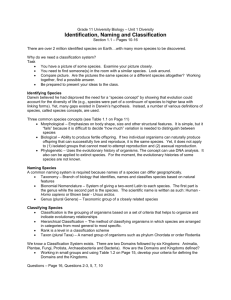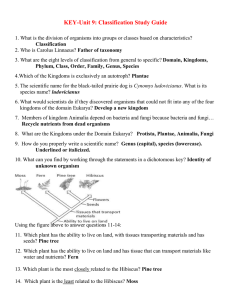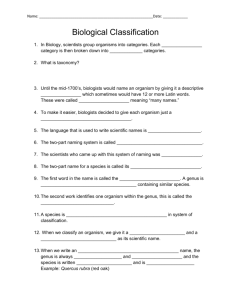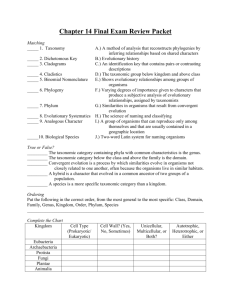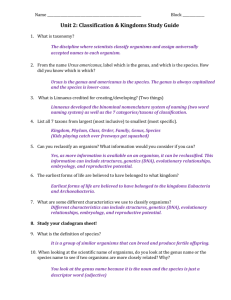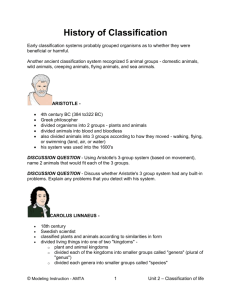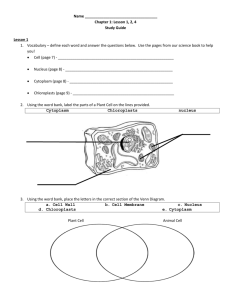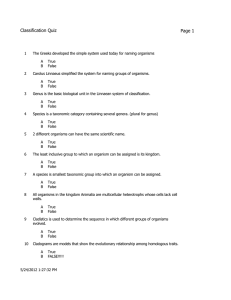BSAA Chapter 5 Basic Principles of Plant Science Notes
advertisement
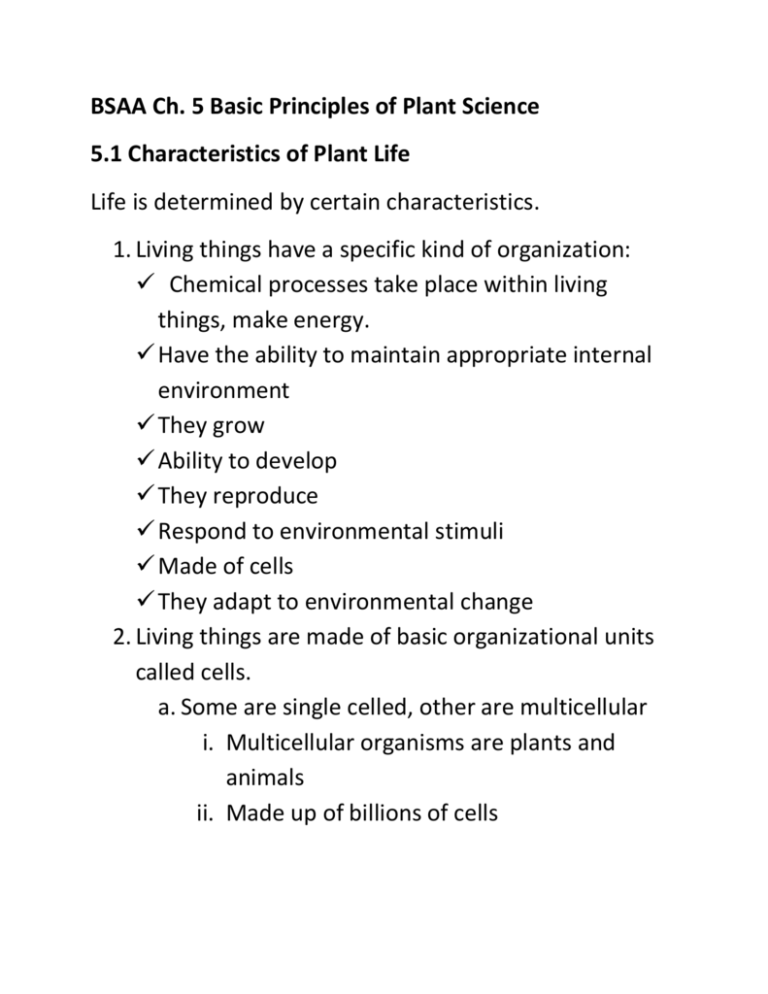
BSAA Ch. 5 Basic Principles of Plant Science 5.1 Characteristics of Plant Life Life is determined by certain characteristics. 1. Living things have a specific kind of organization: Chemical processes take place within living things, make energy. Have the ability to maintain appropriate internal environment They grow Ability to develop They reproduce Respond to environmental stimuli Made of cells They adapt to environmental change 2. Living things are made of basic organizational units called cells. a. Some are single celled, other are multicellular i. Multicellular organisms are plants and animals ii. Made up of billions of cells 3. The chemical reactions that take place within cells involve the transformation of energy into useful forms. a. These are critical for nutrition, growth and development. b. Metabolism = all the physical and chemical processes involved in the life of a plant. c. These processes are constantly occurring! d. Homeostasis = ability of an organism to regulate its internal environment 4. Living things Grow and Develop a. Growth = increase in mass related to enlargement of cells, or increase in number of cells. b. Development = change of an organism over time 5. Living things must be able to reproduce . a. Sexual Reproduction : i. uses specialized reproductive cells, the sperm and egg ii. These cells unite during fertilization and eventually develop into a mature plant b. Asexual Reproduction i. No special cells ii. A new plant forms from a part of a mother plant iii. Offspring is identical to the mother plant 6. Living things adapt to a stimuli a. Stimuli = changes to the internal or external environment of an organism b. Stimuli produce responses from the living things. c. Examples: i. Plants respond to the angle of light and intensity of light ii. Respond to gravity 7. Living things must also be able to evolve or change as their environment changes. a. Through evolution, organisms develop traits that improve their ability to survive in a particular environment. 5.2 Classification and Naming Taxonomy = the branch of biology that deals with identifying and naming organisms. 1. 1700’s Carl von Linne of Sweden first identified 2 kingdoms: planate and animalia. 2. 1969 Robert Whittaker proposed five kingdoms a. Four of the five kingdoms consist of eukaryotes page 82 i. Eukaryotes = cells that have a nucleus and other membrane-bound organelles ii. They are plantae, animalia, fungi (mold and yeast) and Protista (protozoa, algae, water molds and slime molds). iii. The fifth kingdom is Prokaryotae (singlecelled bacteria and algae). b. Taxonomic classification is based on the degree to which organisms are related. c. Dichotomous Key = a written set of choices that leads to the name of a plant. 3. 7 major taxonomic groups: kingdom, division (phylum), class, order, family, genus and species. a. King Philip cried Oh for goodness sake! b. Cultivated plants are often given additional variety and cultivar names. 4. Plant Nomenclature a. Plants may have multiple common names that create confusion. b. Nomenclature = the naming of organisms c. System where plants have two names, a scientific one and a common one. d. The genus (scientific name) is written with a capital letter and then underlined or italicized. e. The specific common name is written in lowercase. f. Species = composed of organisms with characteristic that distinguish them from other groups in a genus. Can pass distinct characteristics from one generation to the next. (ex: dogs) g. Genus= closely related organisms of one or more species (ex: dogs and wolves) h. Variety= cultivated plants within a species that show a significant difference from other plants in the species. i. Cultivar= a cultivated plant with distinguishing characteristics from other plants in a species but does not transfer those characteristics to its offspring. 5. Plant Classification by Life Cycle a. A life cycle is the time required for a seed to geminate, for the seedling to grow vegetatively and for the plant to flower and produce viable seed. b. Three categories: i. Annual: a plant that completes it life cycle within one year, or one growing season. ii. Biennial: A plant that normally requires two growing seasons. In the first growing season, the plant grows vegetative. 1. They then go dormant over the winter and growth and seed production is resumed the spring of the second season. iii. Perennial: A plant with a life cycle of more than two growing seasons. 1. May be woody or herbaceous
